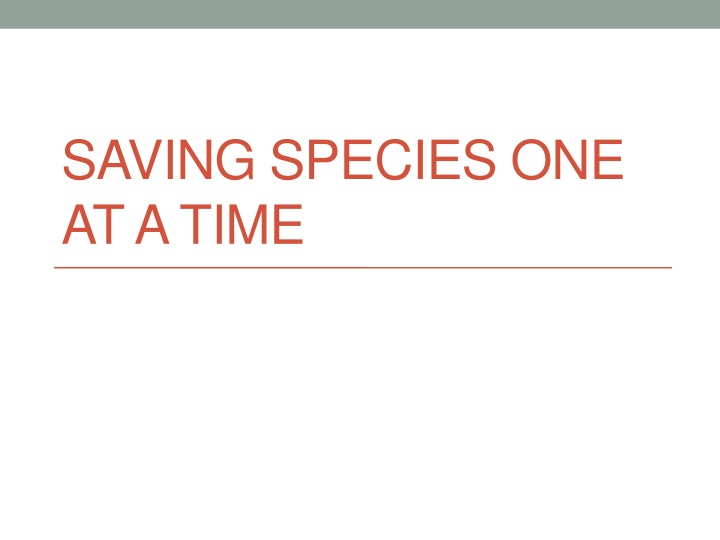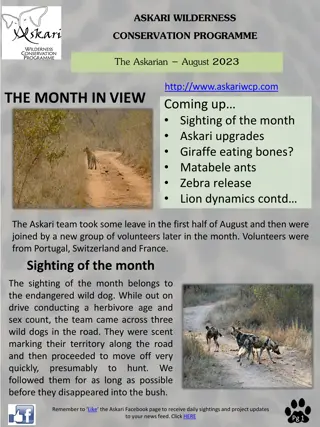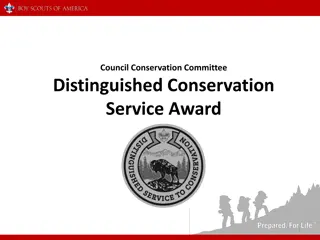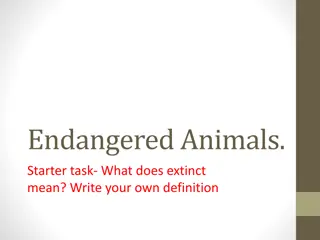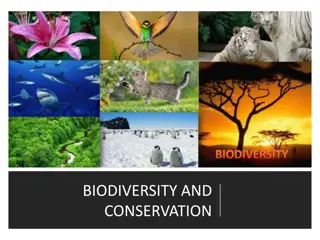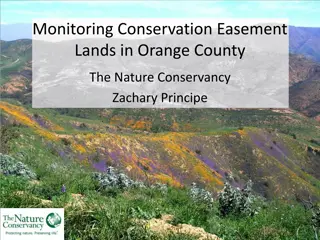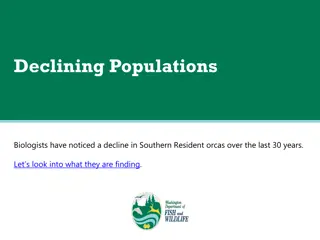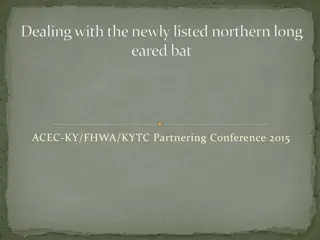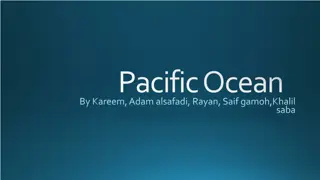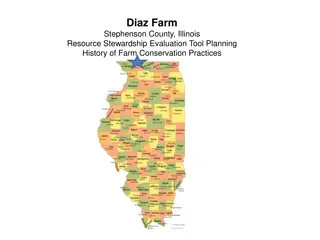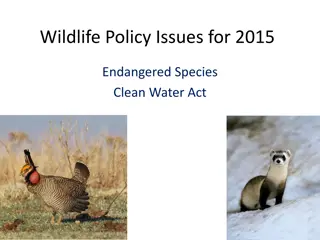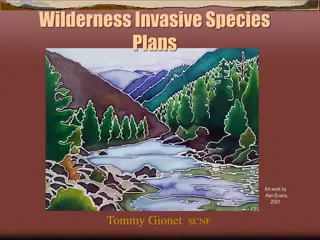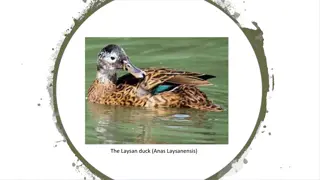Conservation Strategies to Protect Endangered Species
Methods like captive-breeding programs, preserving genetic material, utilizing zoos and parks, preserving habitats, and implementing conservation strategies are crucial in the efforts to save endangered species from extinction.
Download Presentation

Please find below an Image/Link to download the presentation.
The content on the website is provided AS IS for your information and personal use only. It may not be sold, licensed, or shared on other websites without obtaining consent from the author.If you encounter any issues during the download, it is possible that the publisher has removed the file from their server.
You are allowed to download the files provided on this website for personal or commercial use, subject to the condition that they are used lawfully. All files are the property of their respective owners.
The content on the website is provided AS IS for your information and personal use only. It may not be sold, licensed, or shared on other websites without obtaining consent from the author.
E N D
Presentation Transcript
SAVING SPECIES ONE AT A TIME
Saving Species One at a Time Methods to preserve individual species often involve keeping and breeding the species in captivity.
Captive-Breeding Programs These programs involve breeding species in captivity, with the hopes of reintroducing populations to their natural habitats. Examples: Californian condor. The question remains whether or not these restored populations will ever reproduce in the wild.
Preserving Genetic Material Germ plasm is hereditary material (chromosomes and genes) that is usually contained in the protoplasm of germ cells and may be stored as seeds, sperm, eggs, or pure DNA. Germ-plasm banks store germ plasm in controlled environments for future use in research or species-recovery efforts.
Zoos, Aquariums, Parks, and Gardens Zoos now house the few remaining members of a species and are perhaps the species last hope for survival. Zoos, wildlife parks, aquariums, and botanical gardens, are living museums of the world s biodiversity. Disadv: rarely have enough resources or knowledge to preserve more than a fraction of the world s rare and threatened species.
Preserving Habitats and Ecosystems Species confined to a small area could be wiped out by a single natural disaster. While other species require a large range to find adequate food. Therefore, protecting the habitats of endangered and threatened species often means preserving or managing large areas.
Conservation Strategies Protecting entire ecosystems By doing this, we may be able to save most of the species in an ecosystem instead of only the ones that have been identified as endangered. The Earth s biosphere depends on all its connected ecosystems.
Conservation Strategies One strategy is to identify areas of native habitat that can be preserved, restored, and linked into large networks. Another strategy is to promote products that have been harvested with sustainable practices.
Legal Protection for Species Many nations have laws and regulations designed to prevent the extinction of species, and those in the United States are among the strongest. In 1973, the U.S. Congress pass the Endangered Species Act. The Endangered Species Act is designed to protect any plant or animal species in danger of extinction.
Recovery Plans Under the fourth main provision of the Endangered Species Act, the USFWS must prepare a species recovery plan for each listed species. These plans often propose to protect or restore habitat for each species. However, attempts to restrict human uses of land can be controversial. Real-estate developers may be prohibited from building in certain areas, and people may lose income and may object when their interests are placed below those of another species.
Habitat Conservation Plans A habitat conservation plan is a land-use plan that attempts to protect threatened or endangered species across a given area by allowing some tradeoffs between harm to the species and additional conservation commitments among cooperating parties.
International Cooperation At the global level, the International Union for the Conservation of Nature and Natural Resources (IUCN) facilitates efforts to protect species and habitats.
International Trade and Poaching One product of the IUCN has been an international treaty called CITES (the Convention on International Trade in Endangered Species). The CITES treaty was the first effective effort to stop the slaughter of African elephants being killed by poachers who would then sell the ivory tusks. In 1989, the members of CITES proposed a total worldwide ban on all sales, imports, and exports of ivory, hoping to put a stop the problem.
The Biodiversity Treaty One of the most ambitious efforts to tackle environmental issues on a worldwide scale was the United Nations Conference on Environment and Development, also known as the first Earth Summit. An important result of the Earth Summit was the Biodiversity Treaty. The Biodiversity Treaty is an international agreement aimed at strengthening national control and preservation of biological resources.
Private Conservation Efforts Many private organizations work to protect species worldwide, often more effectively than government agencies. The World Wildlife Fund. The Nature Conservancy Conservation International Greenpeace
Balancing Human Needs Attempts to protect species often come into conflict with the interests of the world s human inhabitants. An endangered species might represent a source of food or income. Or a given species may not seem valuable to those who do not understand the species role in an ecosystem. Many conservationists feel than an important part of protecting species is making the value of biodiversity understood by more people.
